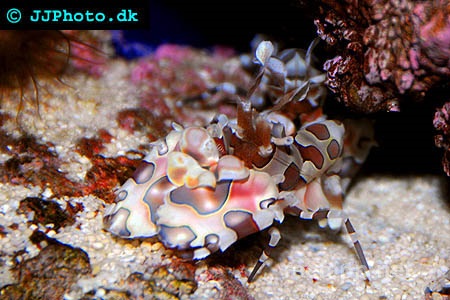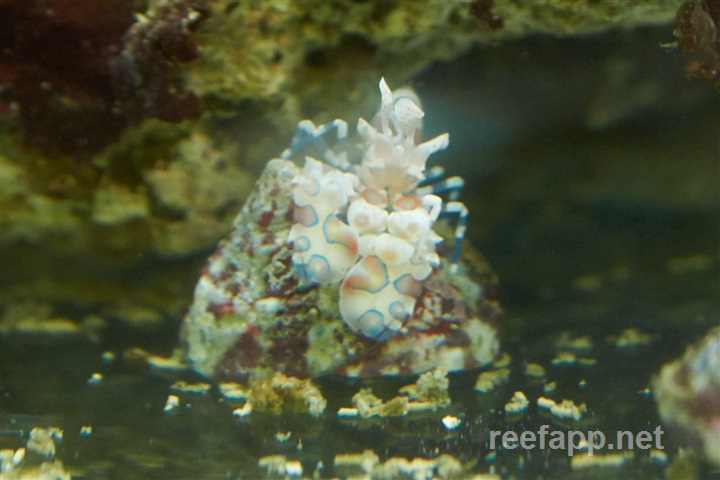Hymenocera picta


| Latin name | Hymenocera picta |
|---|---|
| Local name | Harlequin shrimp |
| Family | Alpheoidea - Hymenocera |
| Origin | East Pacific, Central/West Pacific |
| Max length | 5 cm (2") |
| Minimum volume |
50 l (13 gal) |
|---|---|
| Hardiness |
Average |
| Suitable for aquarium |
Experience, preparation and extra care required |
| Reef safe |
Reef safe with caution |
| Aggressiveness | Peaceful |
| Recommended |
Other invertebrates |
|---|
This shrimp will only eat starfish, but this can be frozen.
Should be fed a couple of times a week with a small piece of starfish.
They are a good solution for controlling the Asterina starfish who in some cases will damage corals.
Shrimps have many different purposes in the tank, some are just pretty while others are shy but useful. Some remove parasites whilst others help fight different pests.
Read more about the different genera and species for more specific information.
Hymenocera - Wikipedia - (English)
Public Enemy Number Two: Asterina sp. Starfish - Reefkeeping Magazine - (English)
Ronald L. Shimek. 2004. Marine Invertebrates (PocketExpert Guide) - TFH Publications / Microcosm Ltd. - (English)
Bob Fenner. Cleaner Shrimps of the Family Hippolytidae - Wet Web Media - (English)
James W. Fatherree. A Few Common Shrimps for the Marine Aquarium - Wet Web Media - (English)

